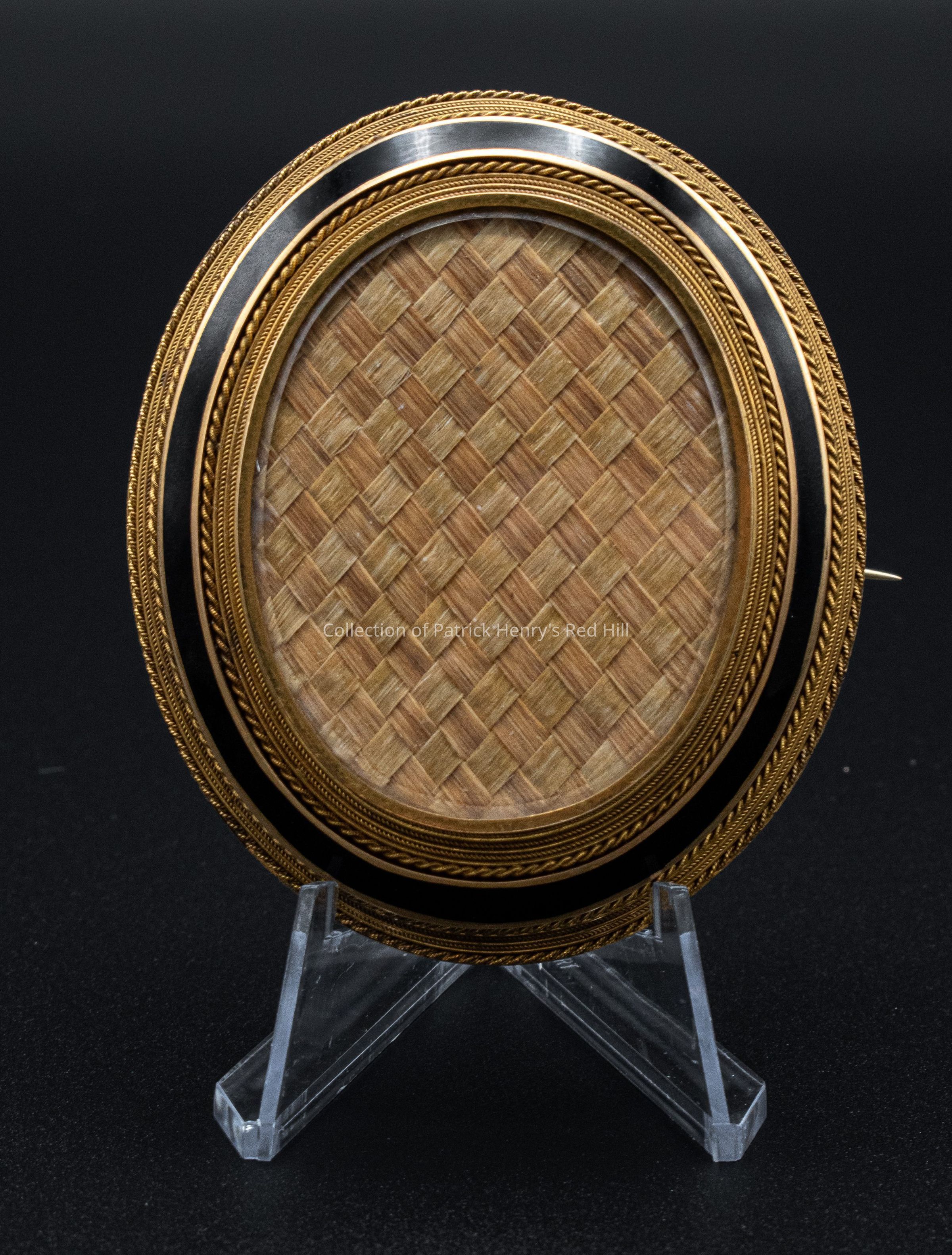Notes
Hair began to be used as an element of jewelry in the Middle Ages because it was believed to be a symbol of life and vitality. Hairwork jewelry gained popularity, reaching its peak in the Victorian era, when creating the jewelry itself became both an art and a pastime. Hairwork was especially popular in mourning jewelry, where hair was cut from the deceased and crafted into a keepsake for the family to wear during the period of mourning. The pieces could also convey the wearer's status through a variety of intricate styles and weaves.
This brooch is part of a set, along with two earrings (76.14.2-3). It includes the hair of John Henry (1796–1868), the youngest son of Patrick Henry, who died at Red Hill on January 7, 1868, and was commissioned in his memory. John's wife, Elvira McClelland (1808–1875), likely wore these items. Although John had brown hair in life, over time, these cuttings have lightened significantly due to oxidation.
From Elvira Henry, the jewelry then passed to their son, William Wirt Henry (1831–1900), who gave them to his daughter, Lucy Gray Henry Harrison (1857–1944). Elizabeth H. Kerper (1890–1964), executrix of Harrison's estate, inherited the jewelry following Harrison's death.
The Patrick Henry Memorial Foundation purchased the set from Elizabeth H. Kerper on June 30, 1945.
